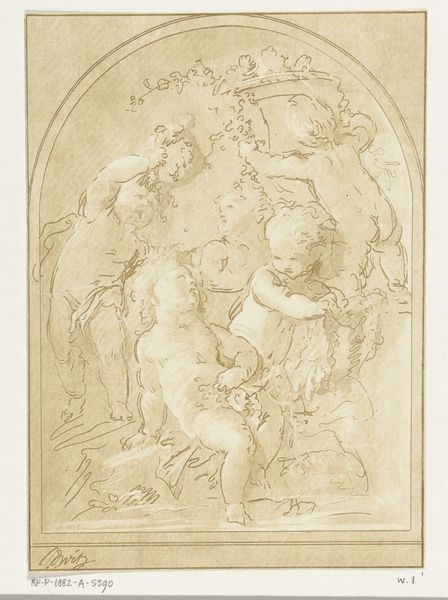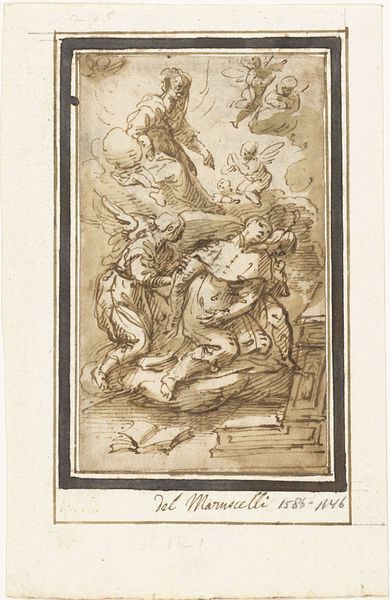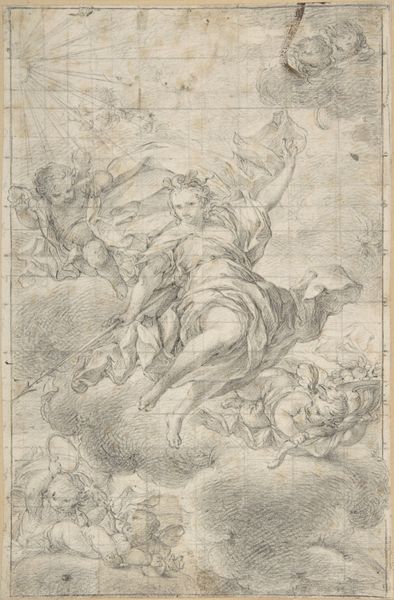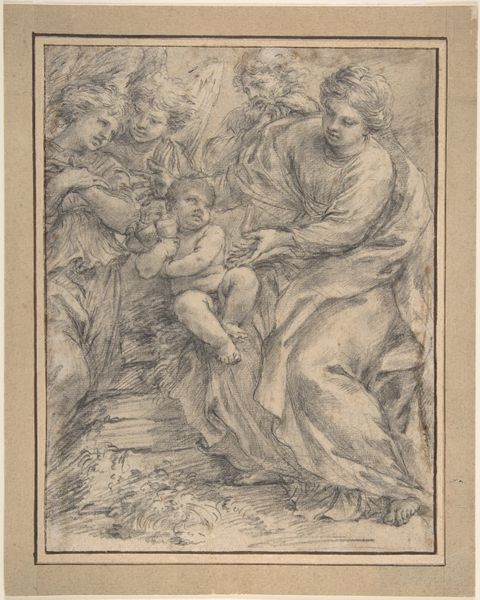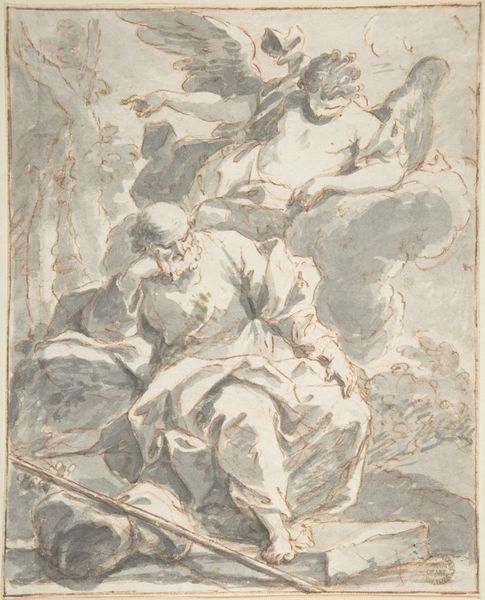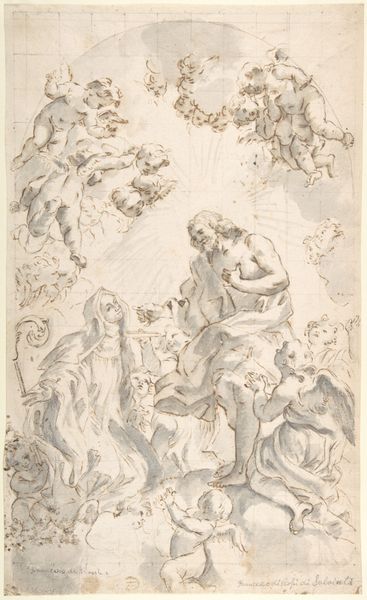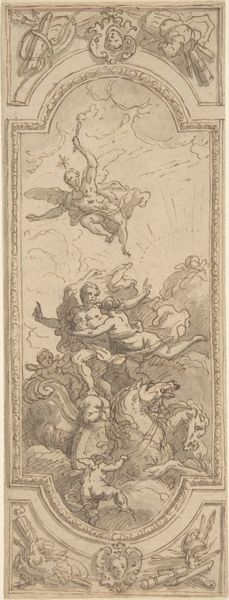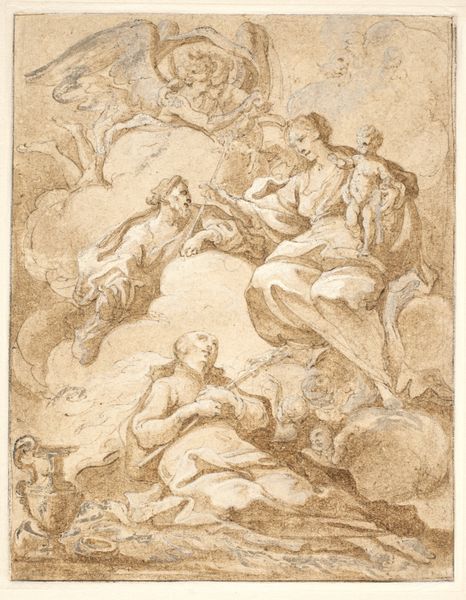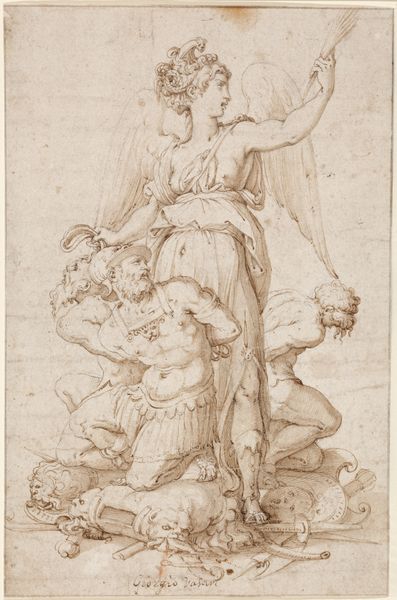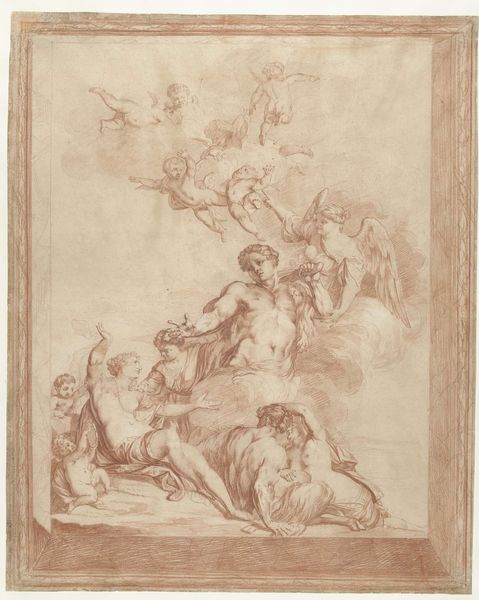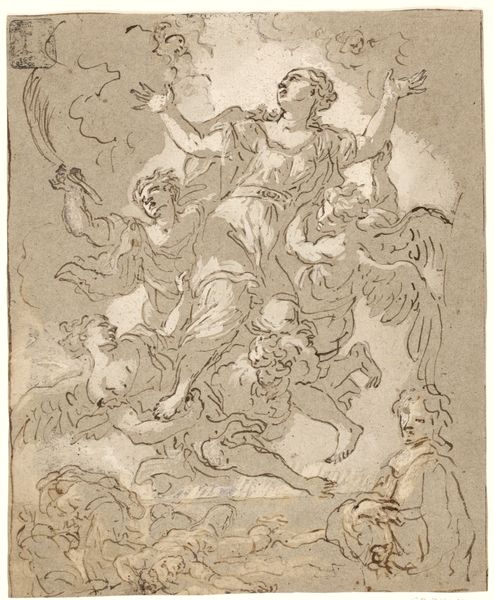
drawing, ink
#
drawing
#
11_renaissance
#
ink
#
history-painting
Dimensions: 9-5/8 x 4-7/16 in. (24.5 x 11.3 cm)
Copyright: Public Domain
Curator: We're looking at "Saint Joseph and the Christ Child," an ink drawing believed to have been created sometime between 1600 and 1700 by an anonymous artist. It's currently held at the Metropolitan Museum of Art. Editor: It feels immediately heavenly, ethereal. The upward movement implied by the figures and that arched frame gives it an ascendant quality. The values of the sepia ink also imbue a softness to it. Curator: The composition certainly directs our gaze heavenward, doesn't it? That baroque flourish emphasizes not just Christ's divinity but Joseph's role within that divine narrative. He's often a marginalized figure, but here, he cradles the child Christ in what looks like a protective embrace. This reinforces a view of family beyond simply bloodlines. Editor: Yes, and note how the artist uses line weight. Thick, decisive lines define the figures' contours, giving them substance, while the lighter, sketchier lines create those billowing clouds, providing spatial depth. The effect makes it float! It’s a careful study of figure-ground relationships, all working towards expressing the subject. Curator: And it reinforces the psychological depth of the scene too. Saint Joseph holds the infant Christ with what looks like careful and dignified pride, despite all the weight that accompanies the messianic role. He isn’t just a carpenter; he's a key figure in this celestial story, entrusted with God's own son. The drawing acknowledges and emphasizes that profound symbolic shift. Editor: You're right, it elevates his position. Speaking of elevation, look at the serpentine form writhing beneath some of the cherubs on the left side, seemingly suppressed or conquered by their divine presence. This dynamic reinforces the ultimate triumph of good over evil within the context of their faith, doesn't it? Curator: Precisely. The inclusion of such traditional symbols embedded within what appears to be a tender family portrait emphasizes that family's importance. To know, love, and protect others – these are all tools against malevolence. I see in this a lesson, that divine acts of love and duty take the simplest earthly forms. Editor: Beautifully put. Considering the artistic control of line, form, and use of traditional symbolic context within this drawing has allowed me to grasp a deeper appreciation of both the artwork itself and also what may be being presented. Curator: Yes, what appears, upon initial observation, as simple scene of tenderness in actuality carries deep religious and cultural continuity over the ages.
Comments
No comments
Be the first to comment and join the conversation on the ultimate creative platform.
